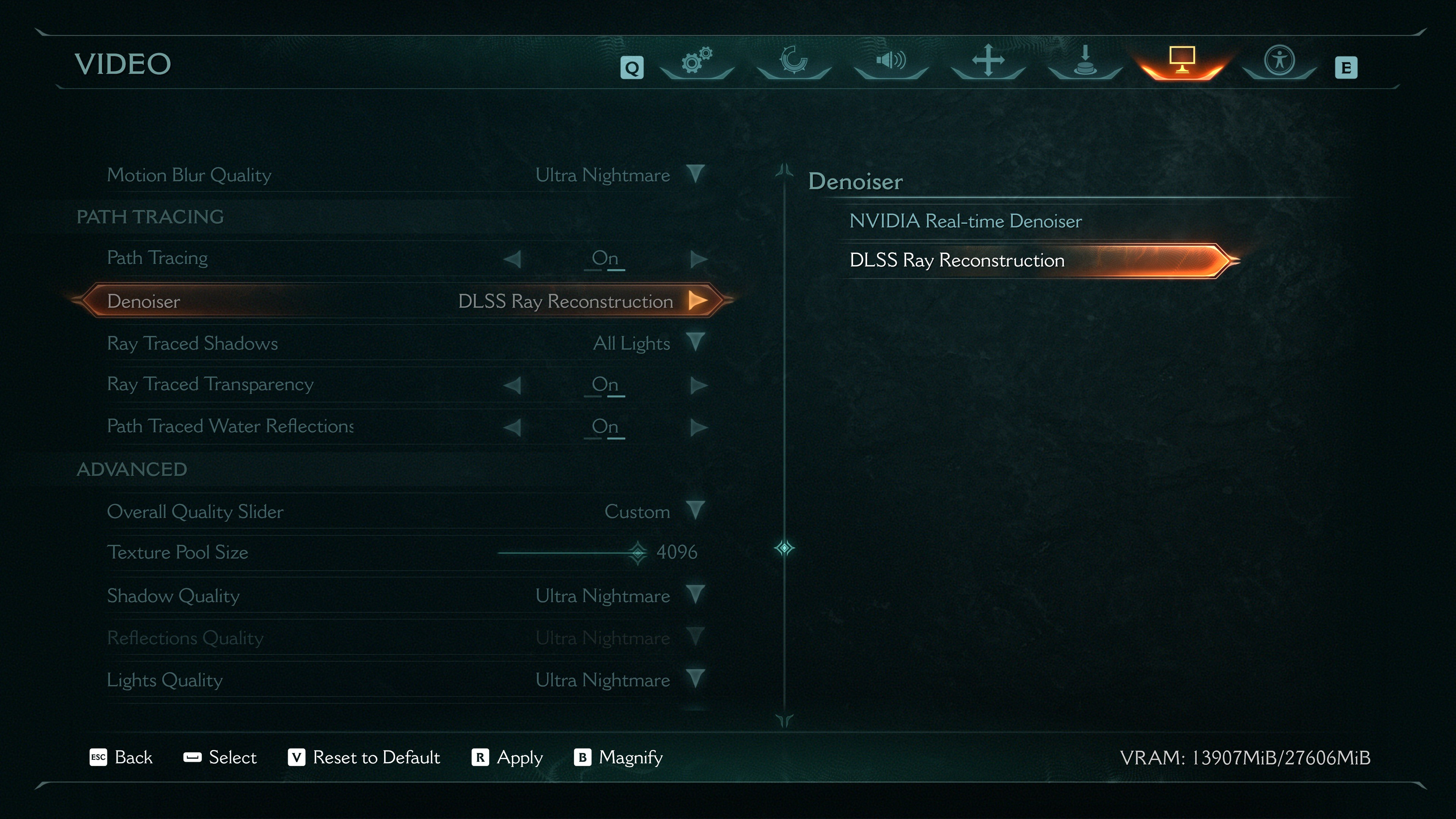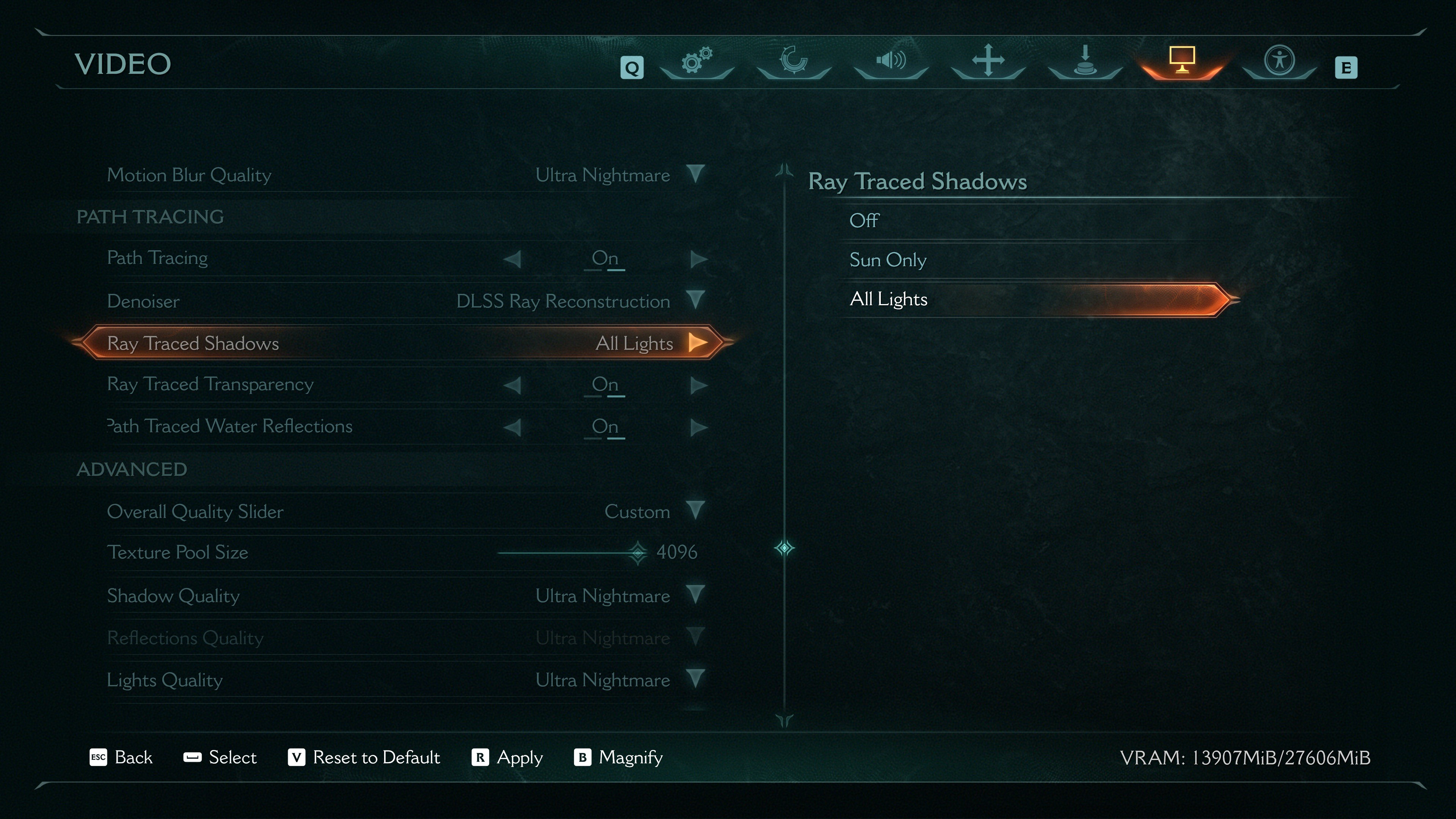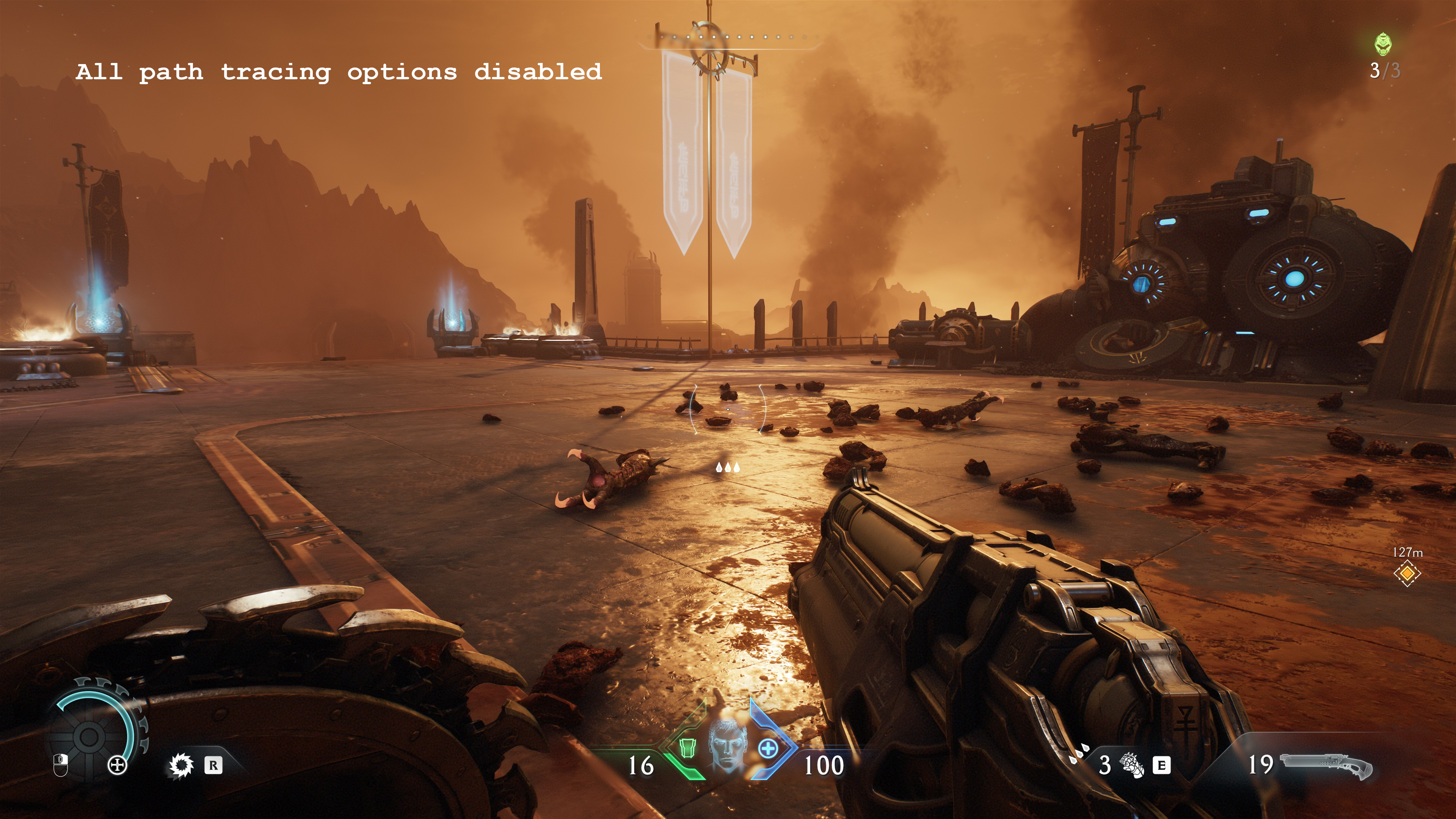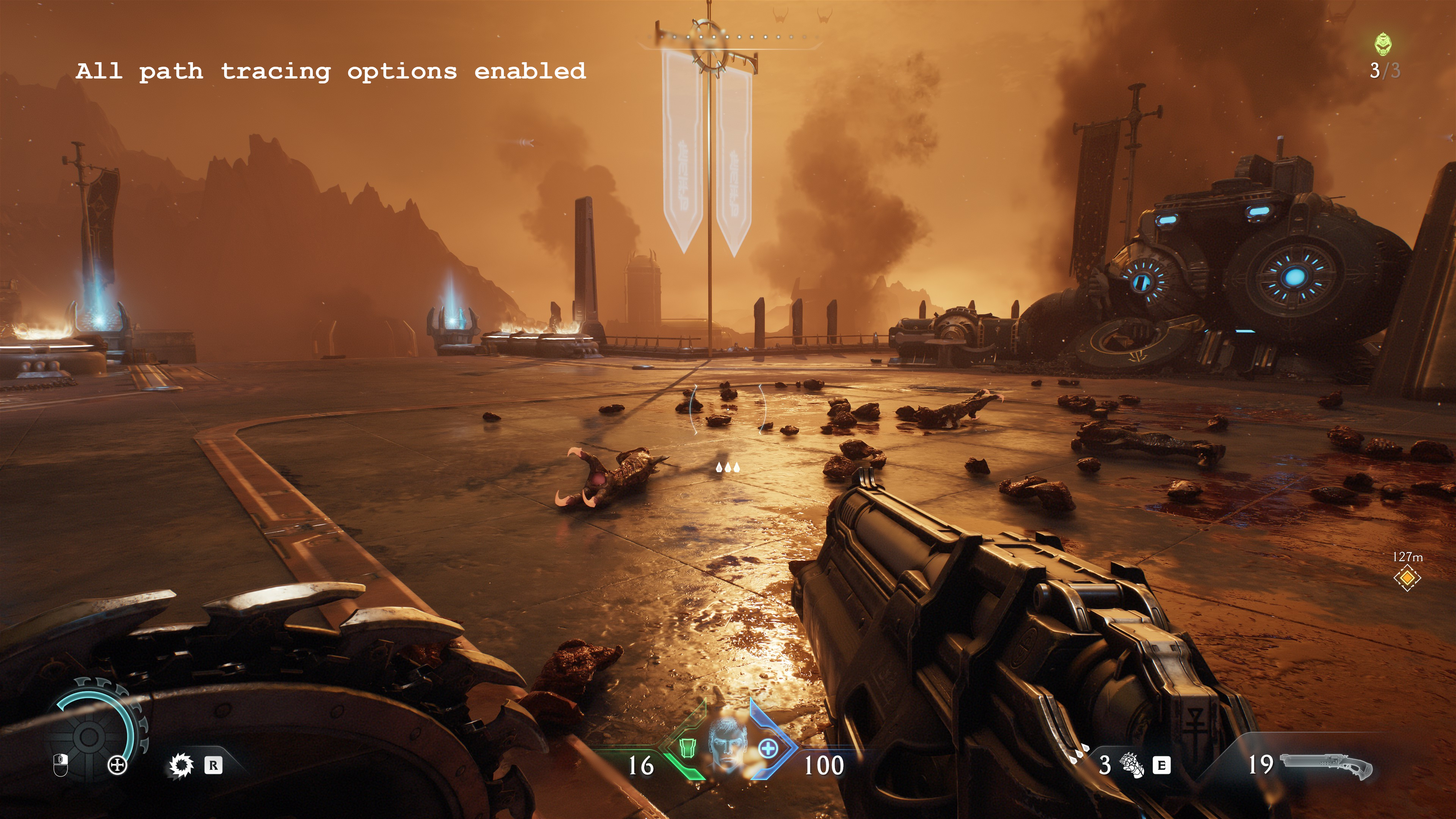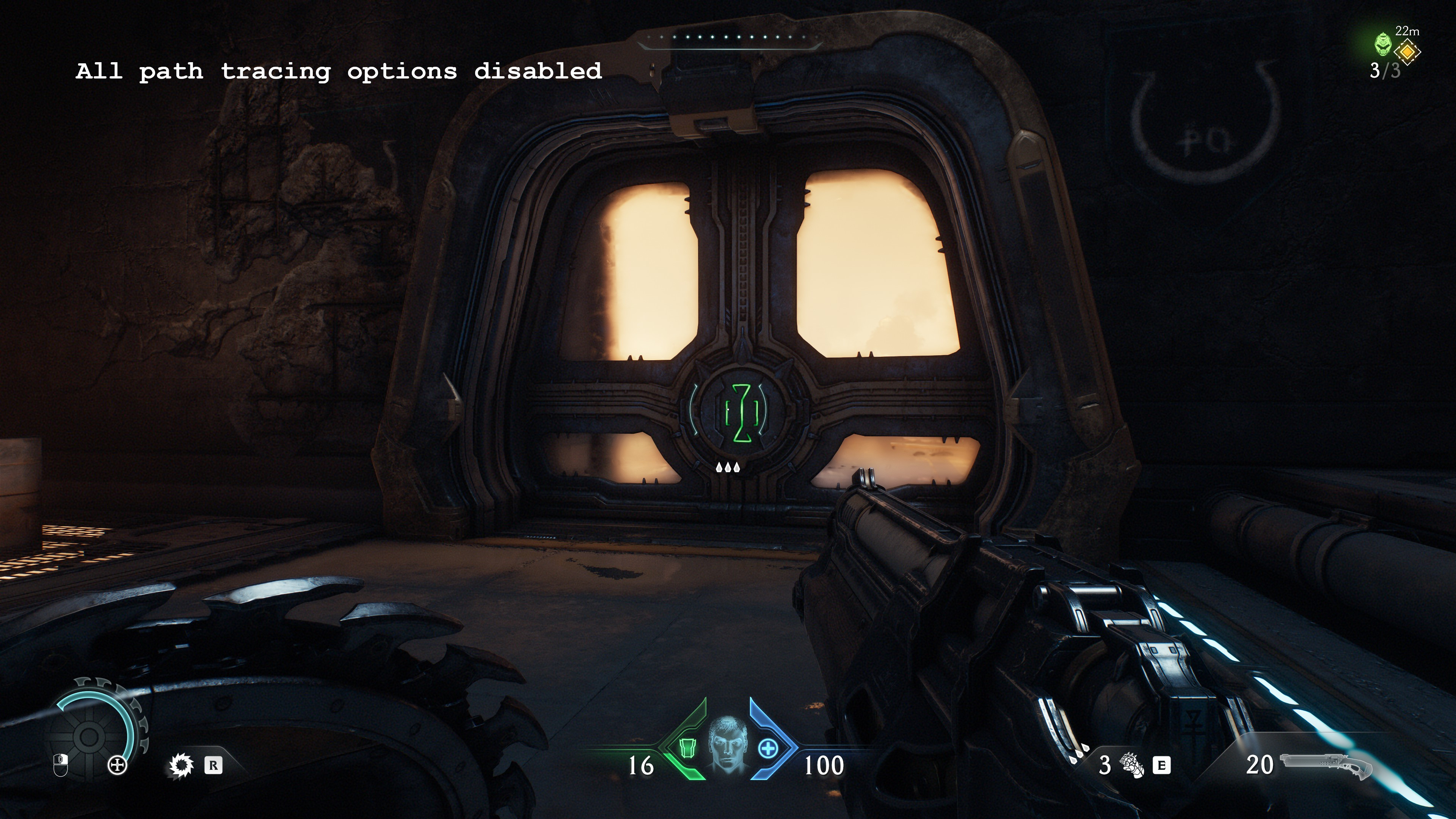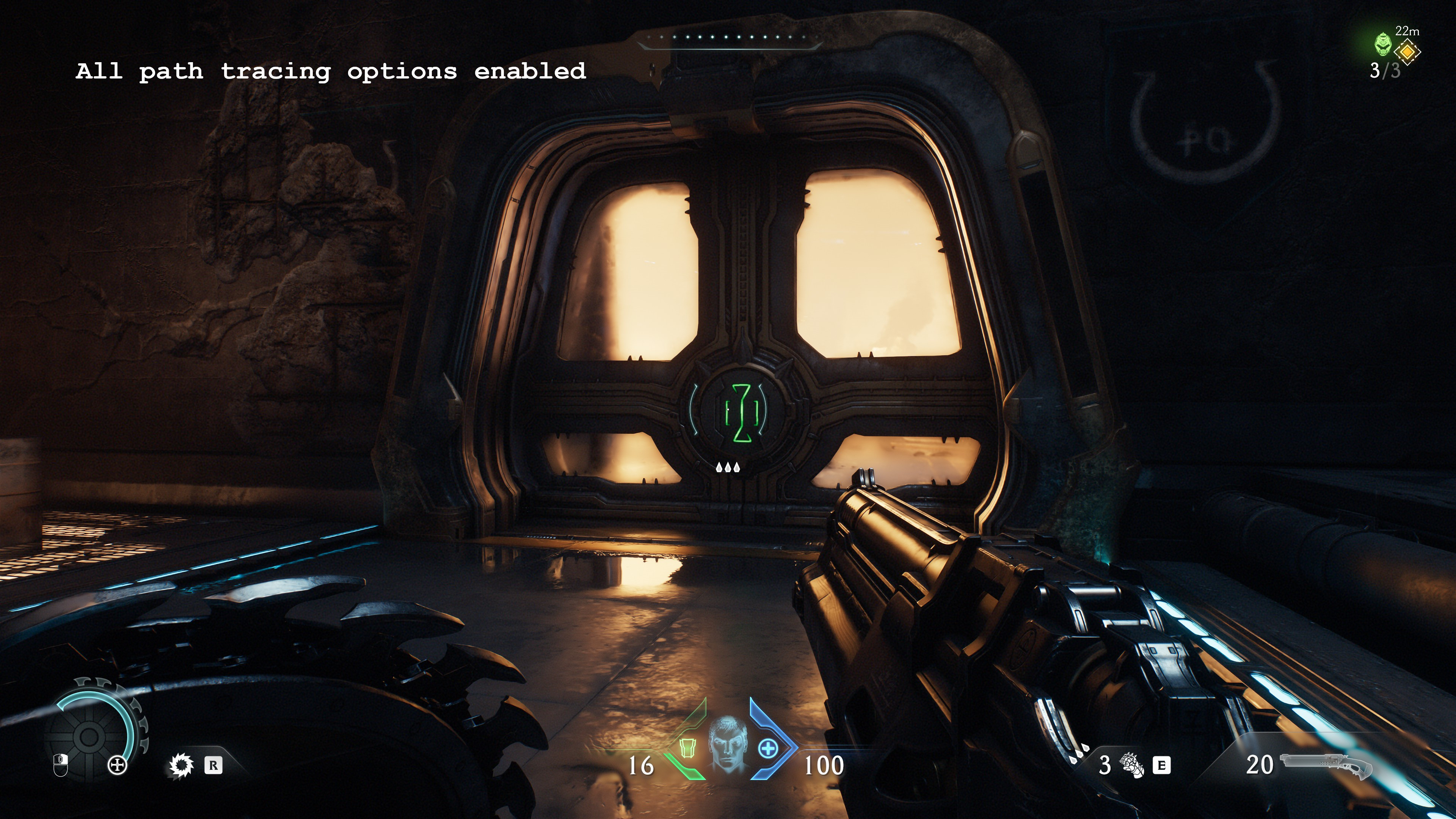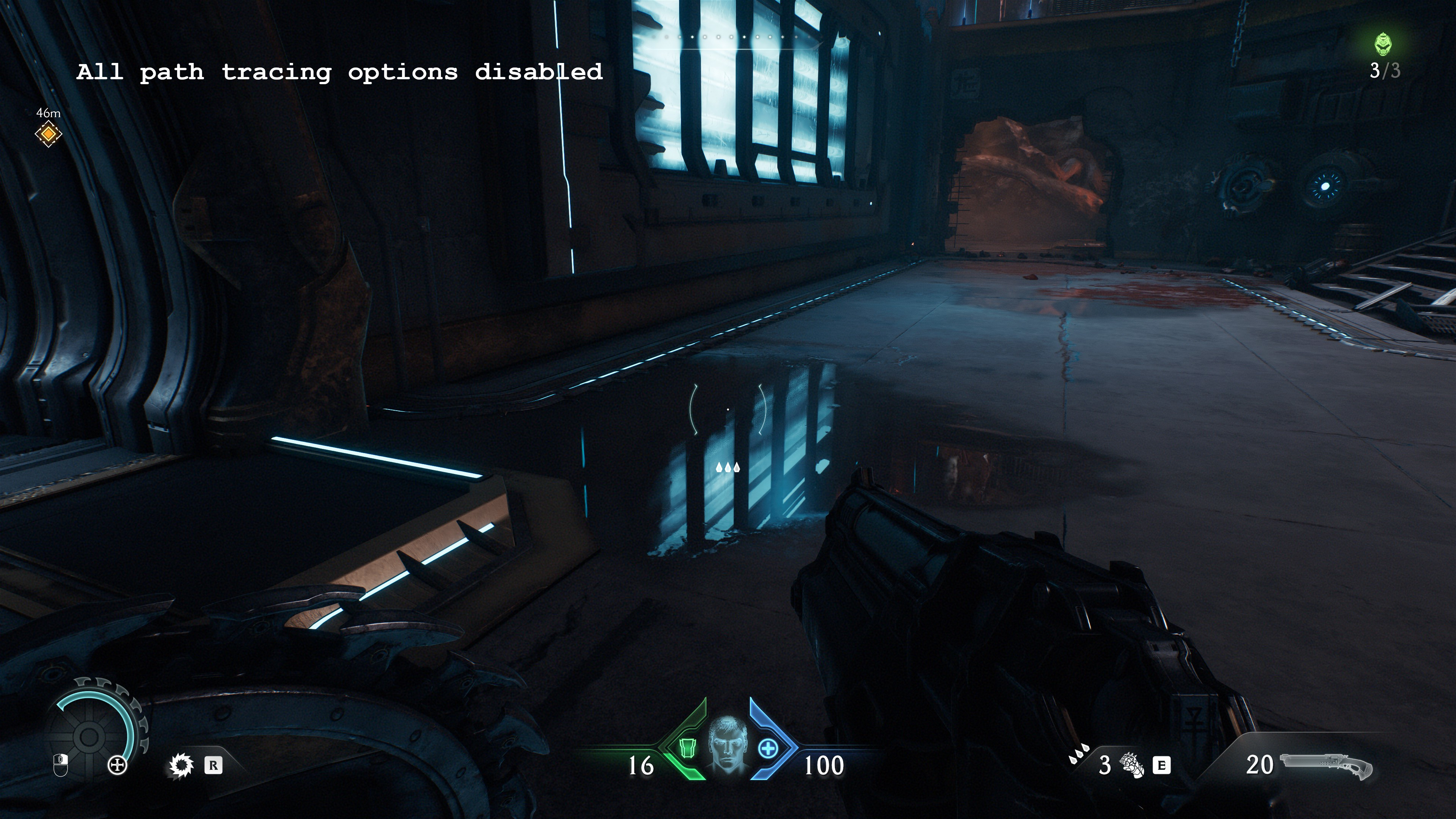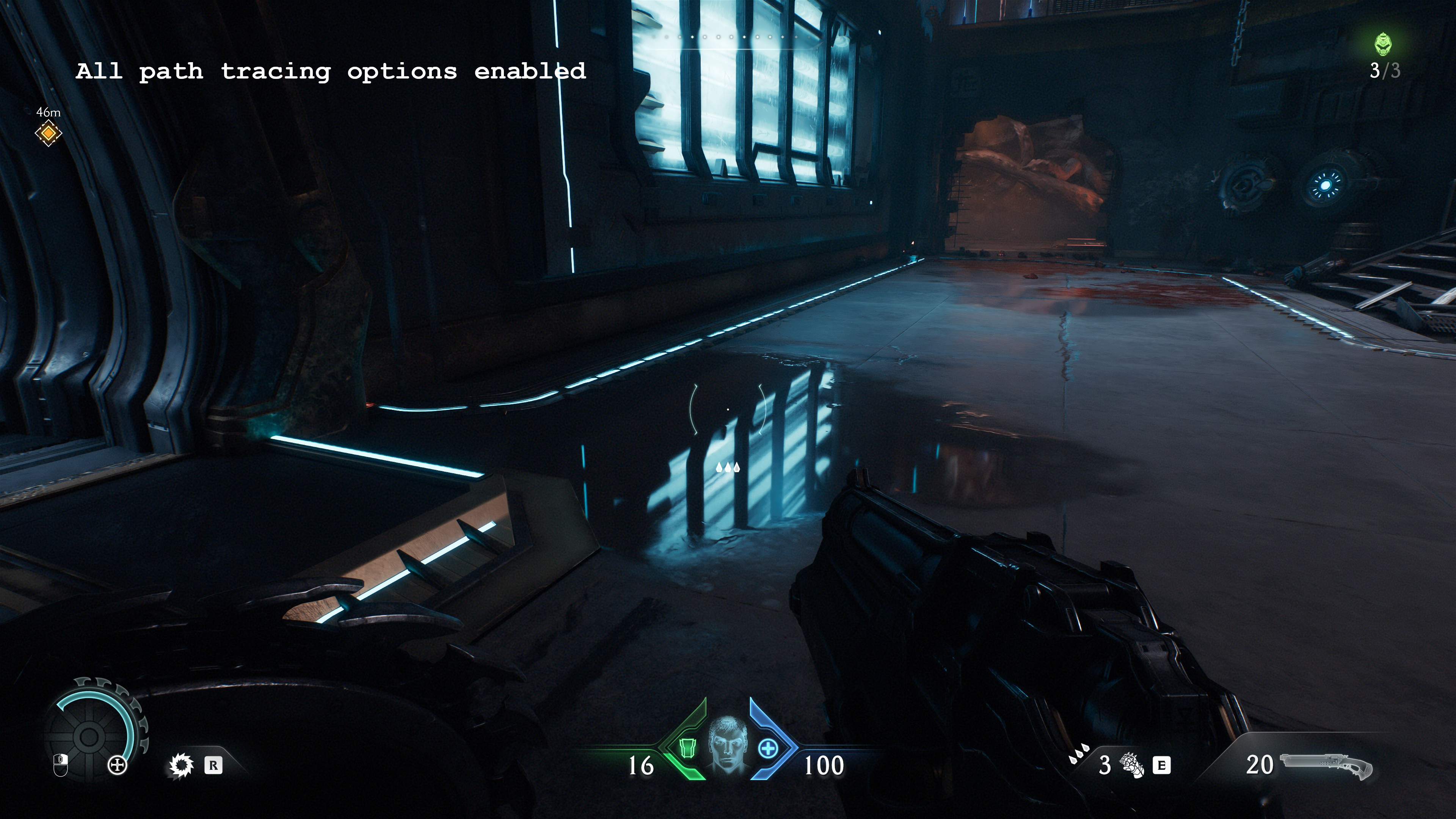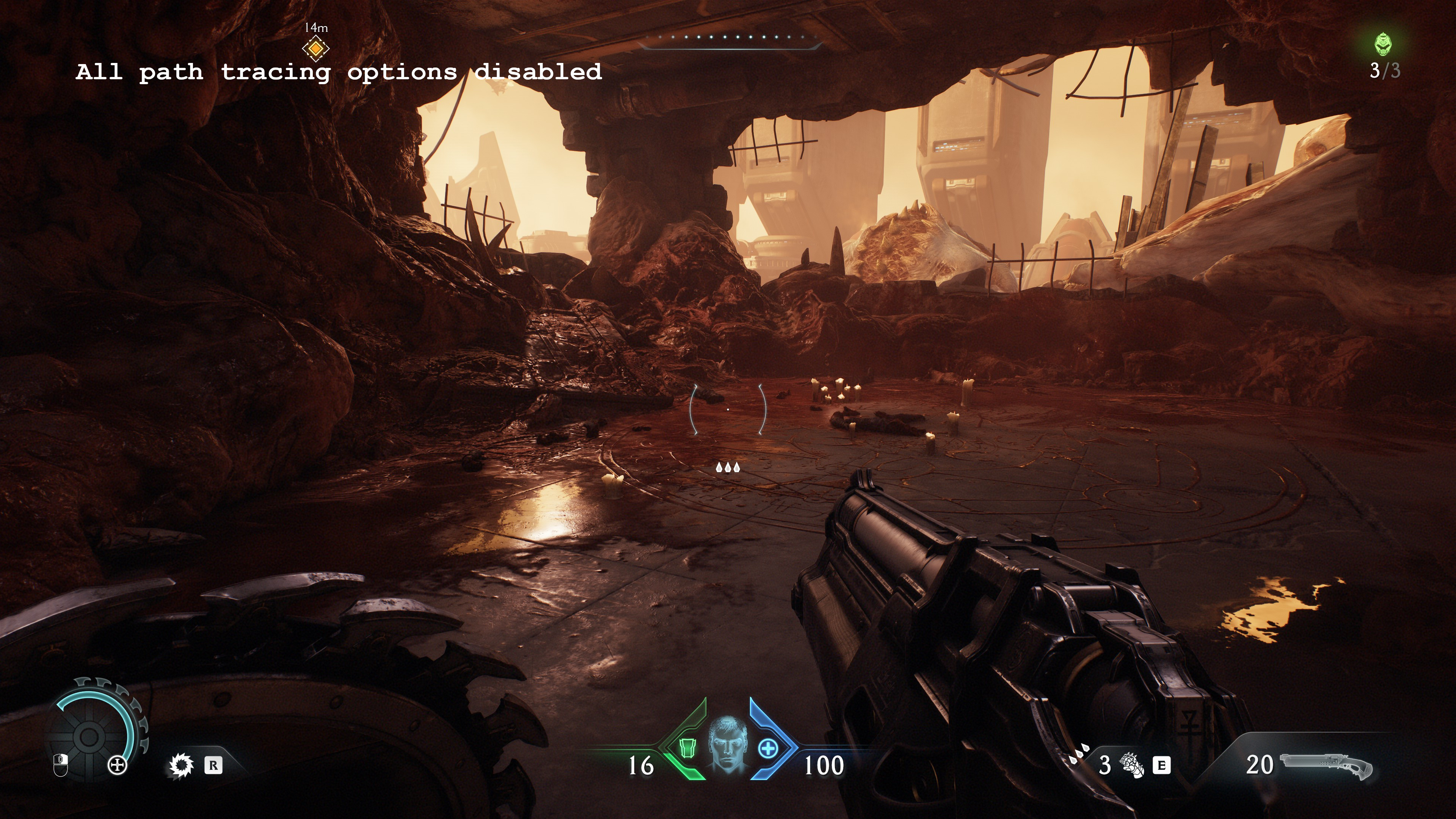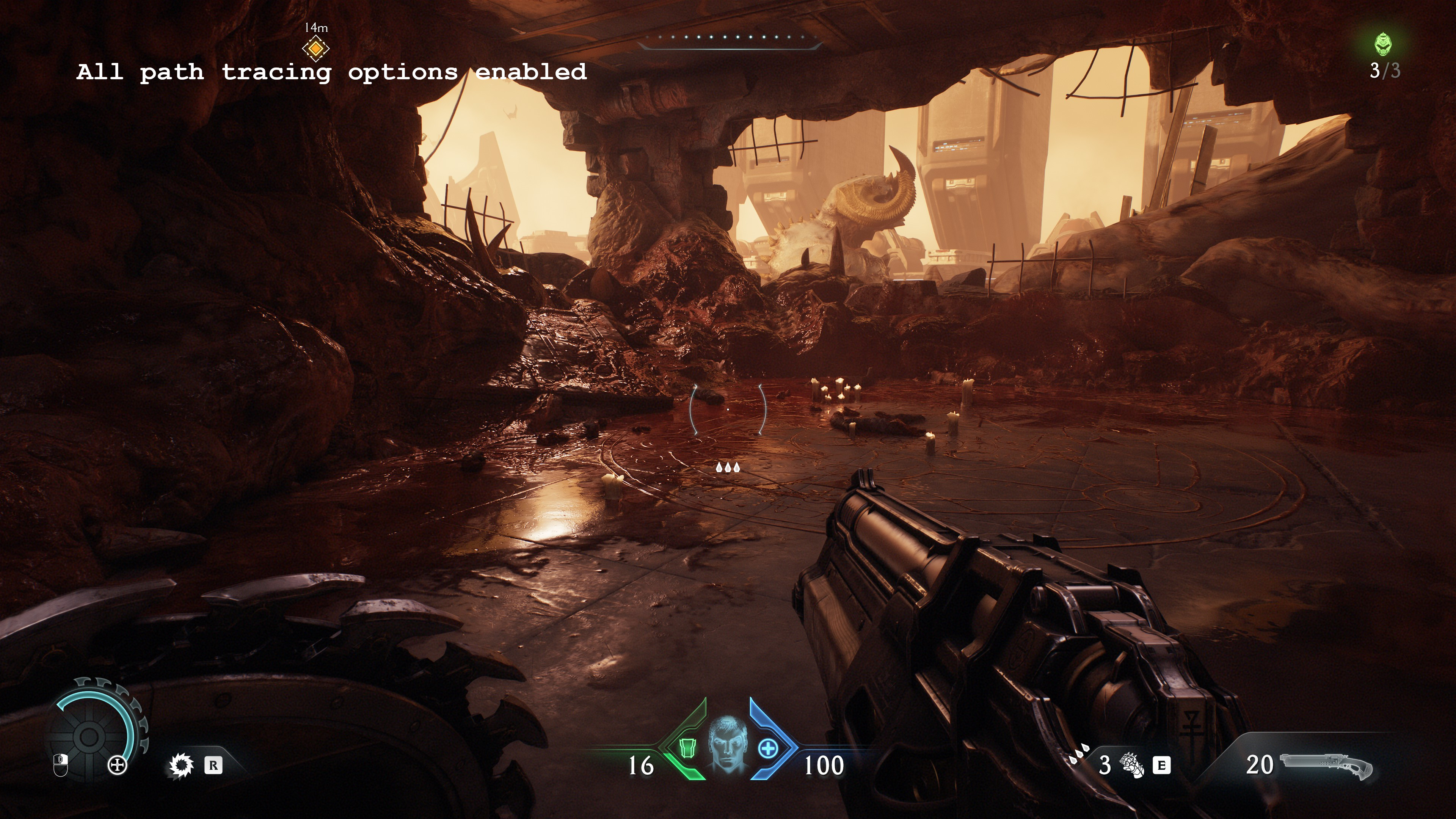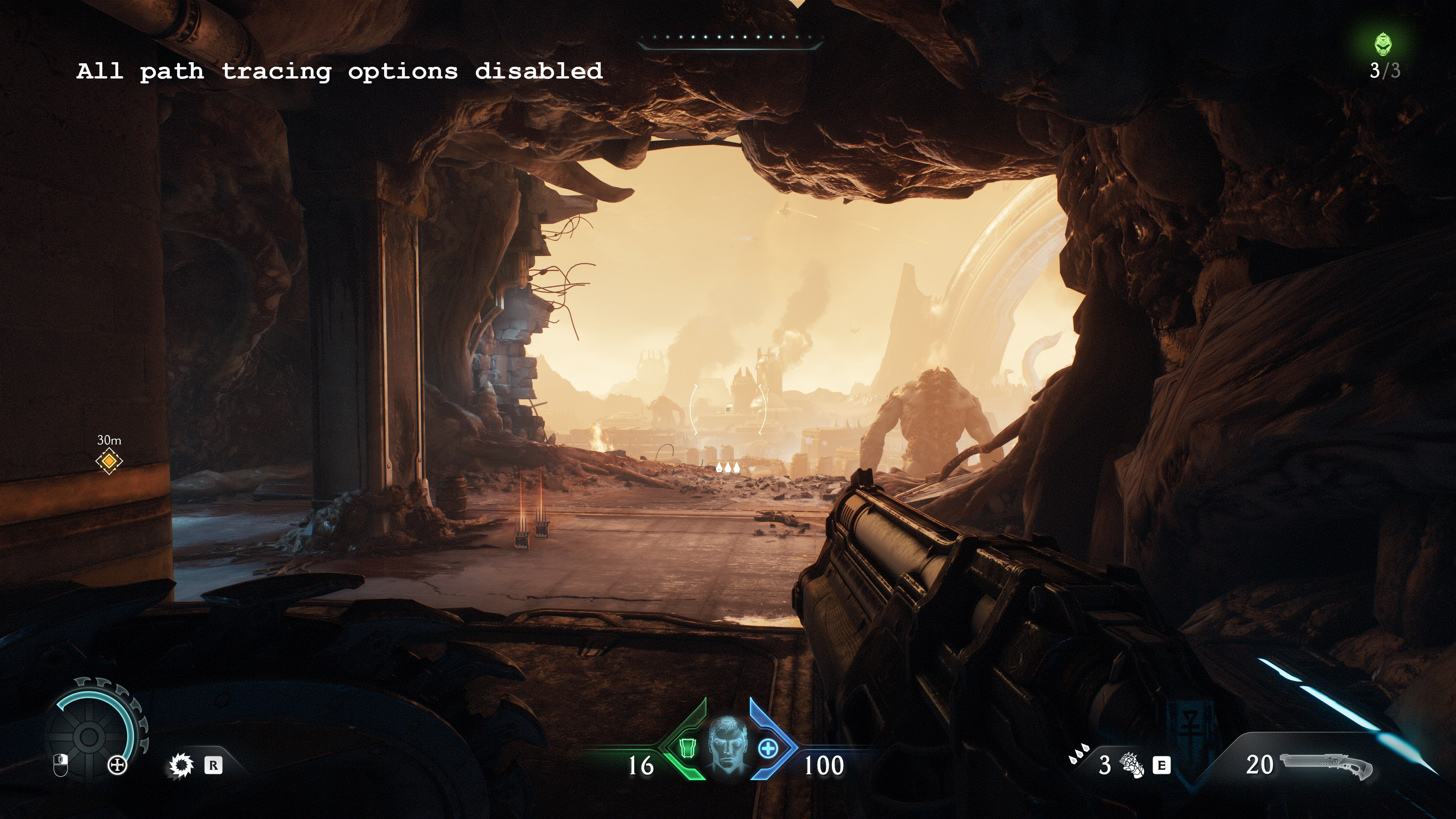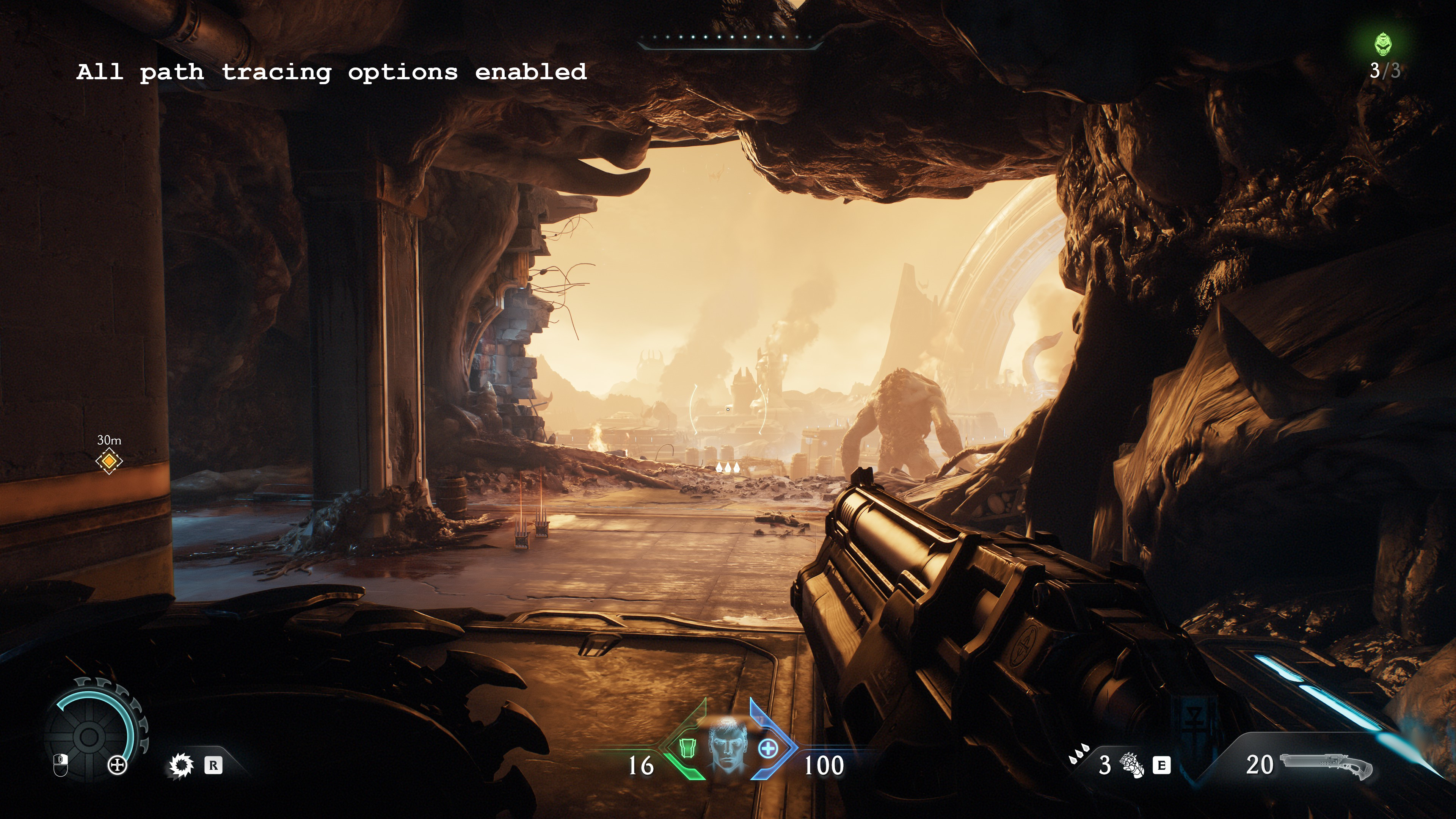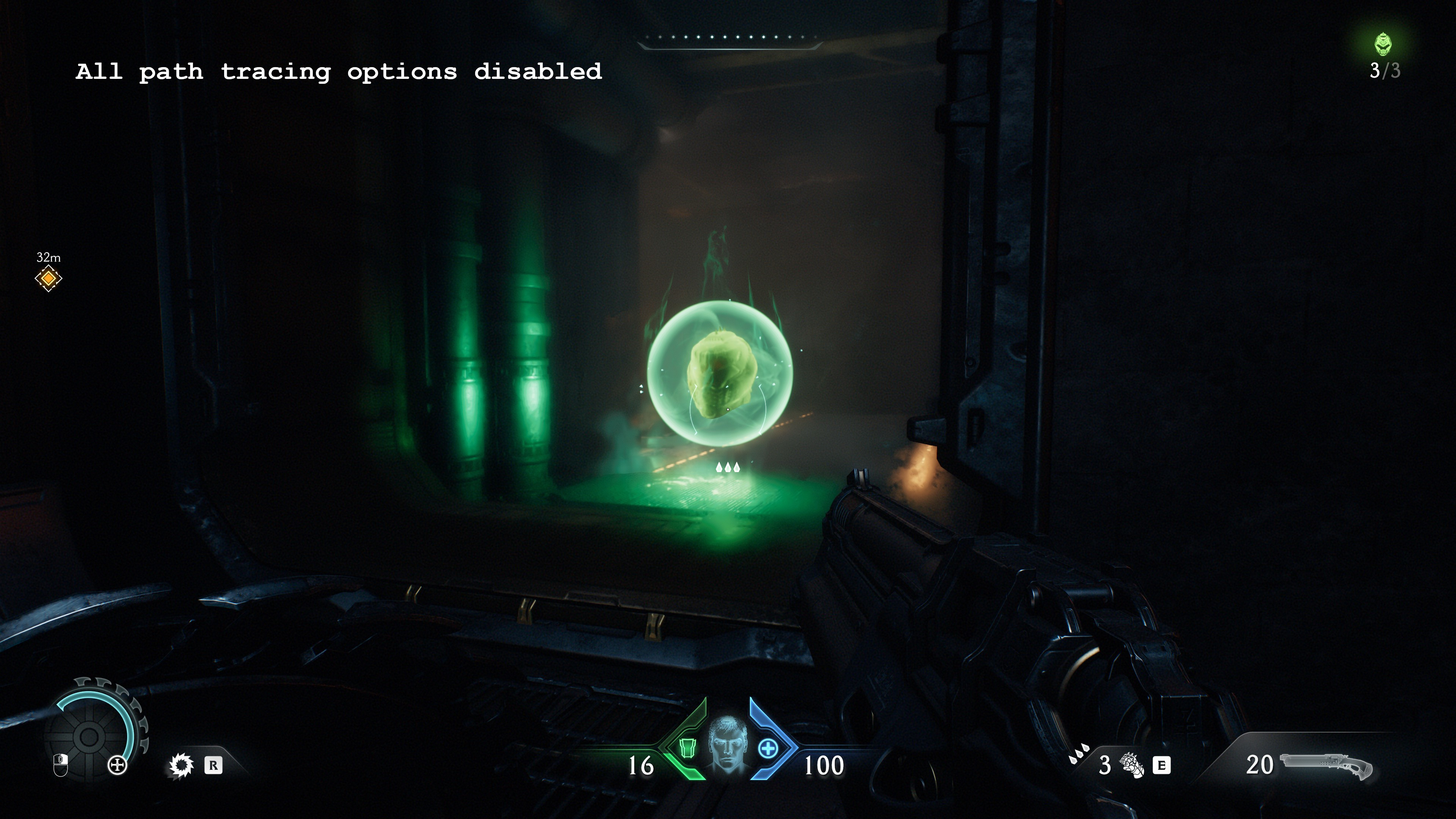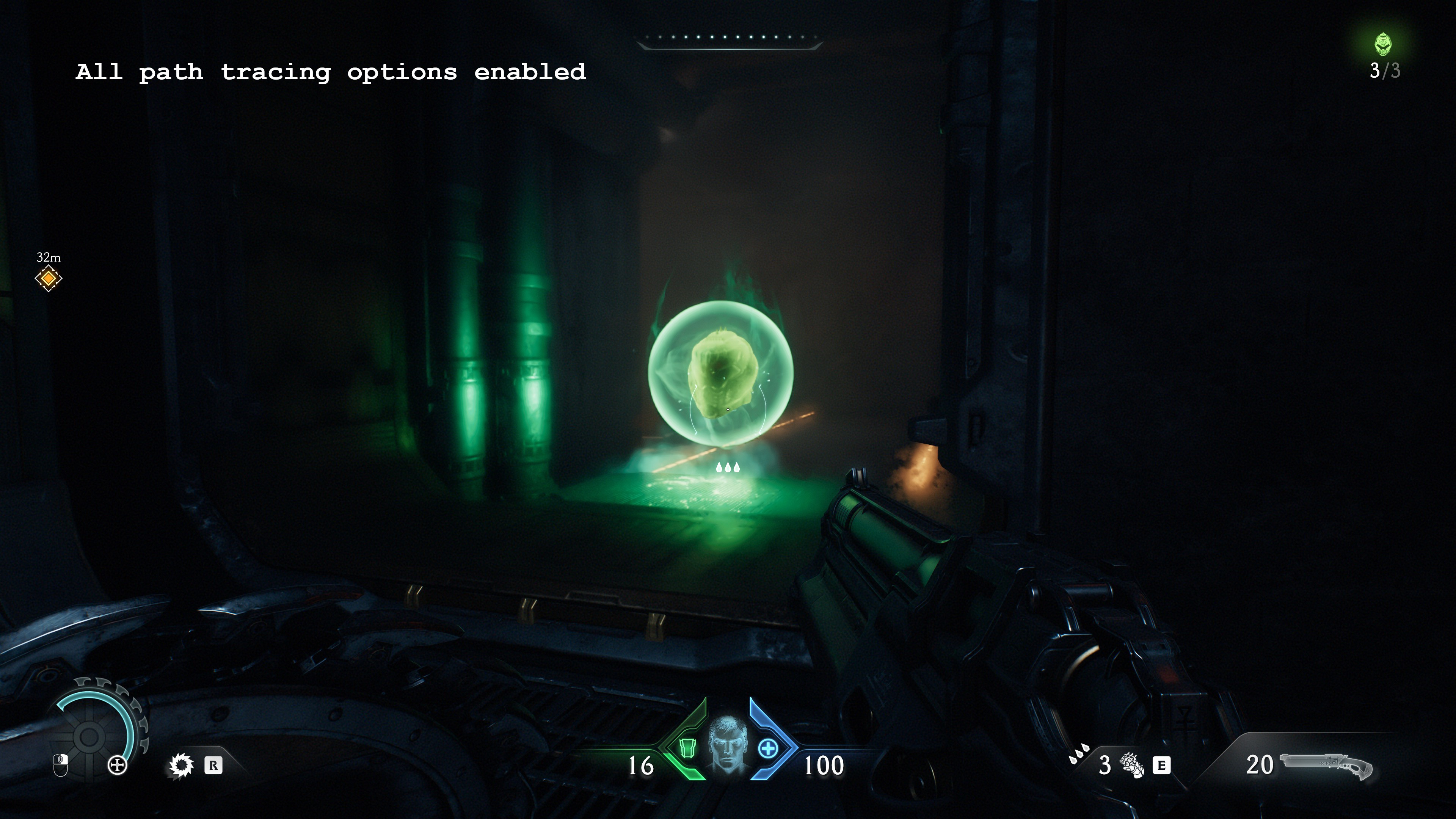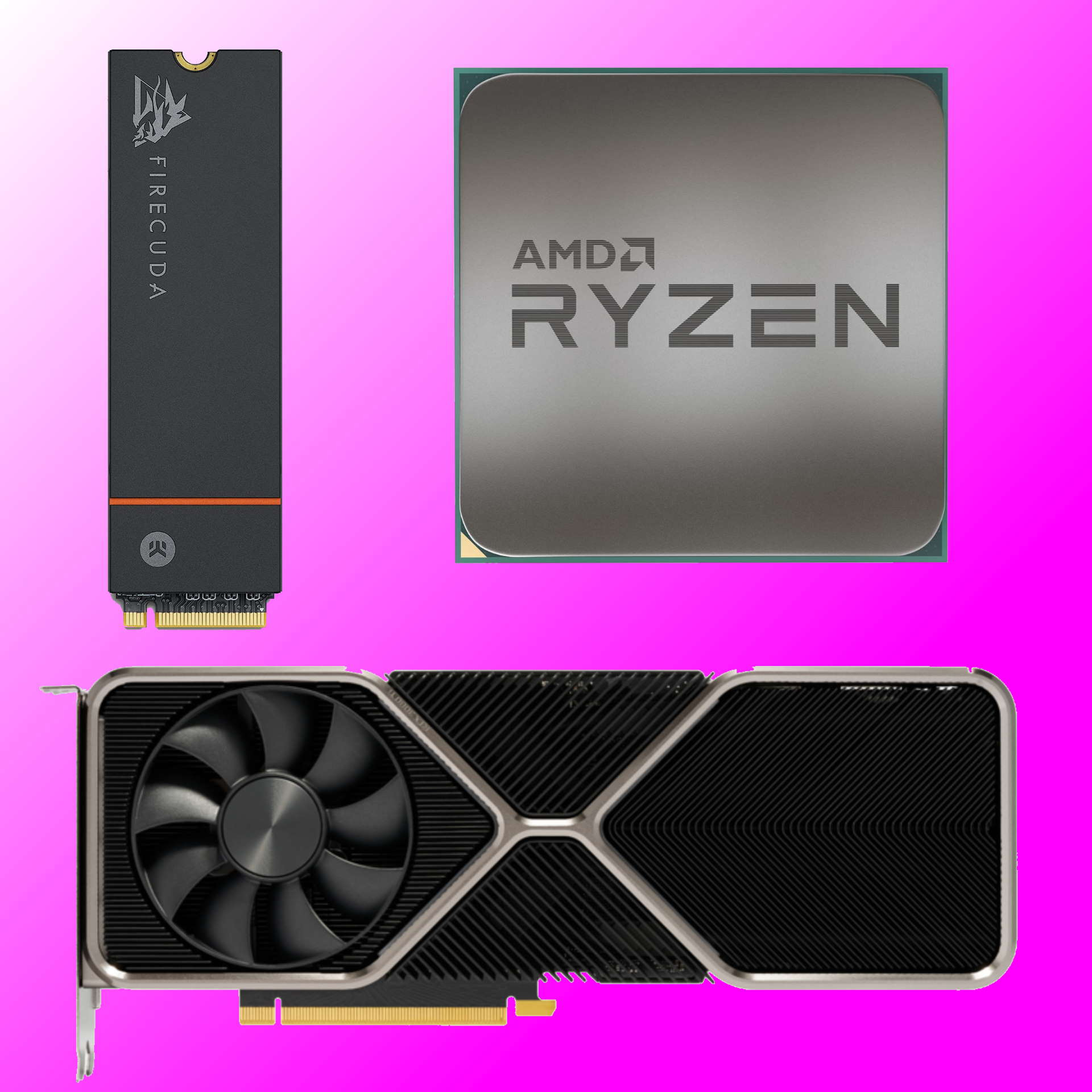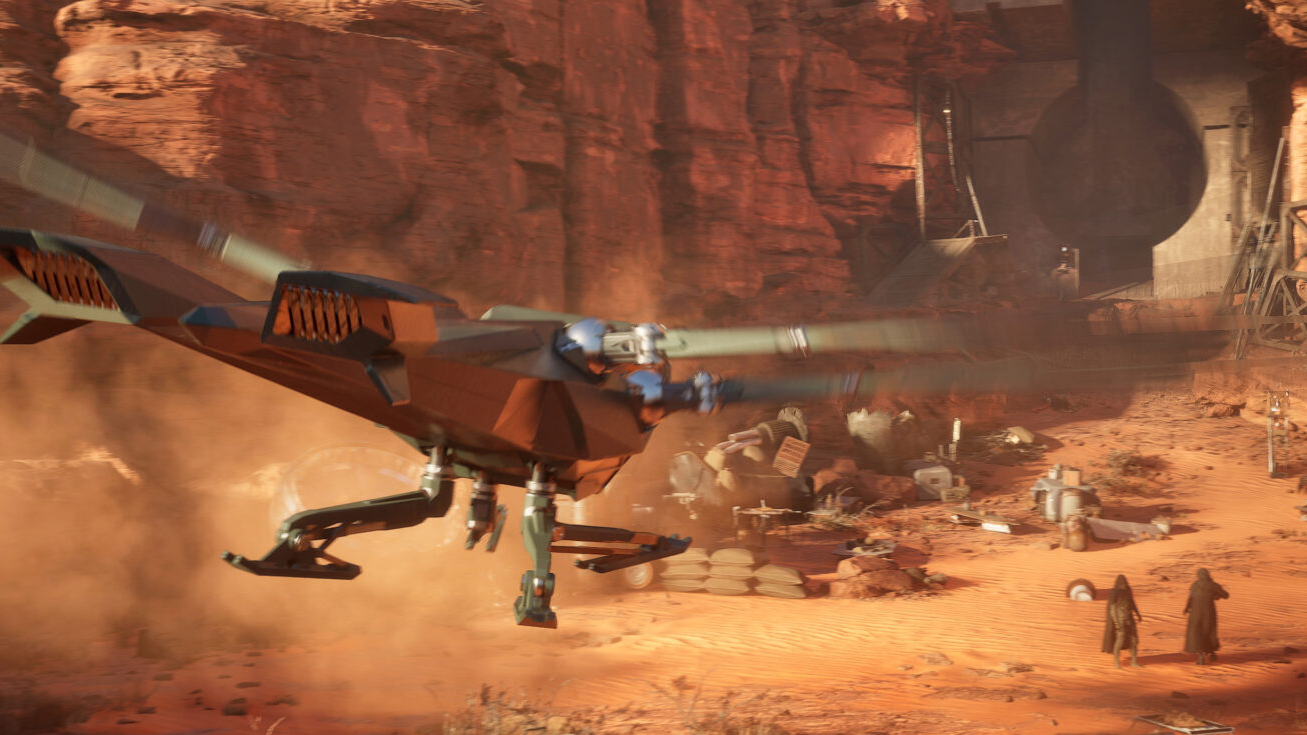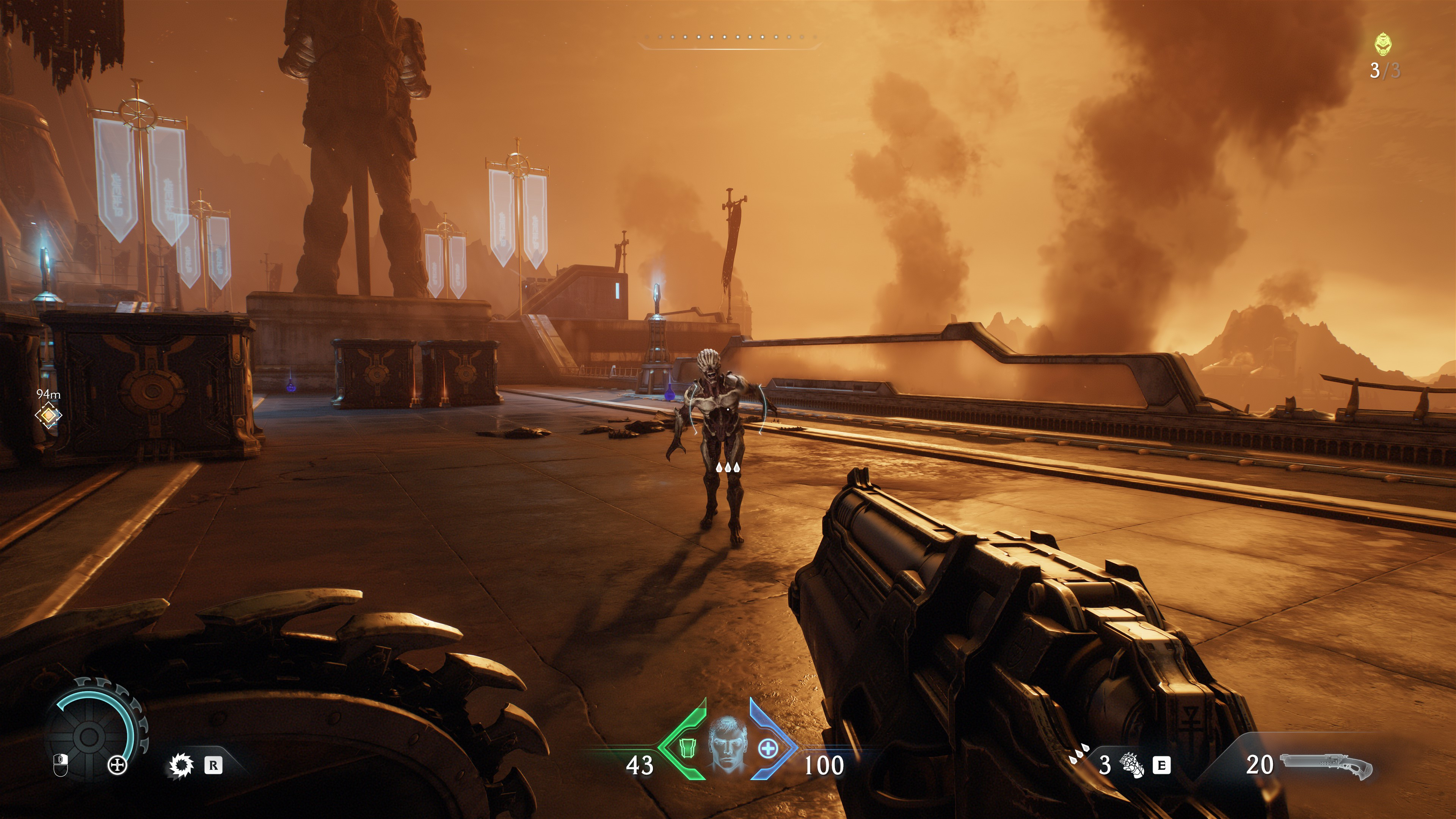
The new built-in benchmarks are pretty neat, though.
When Doom: The Dark Ages launched back in May, developers id Software promised that it would add an extra graphics option in a later patch, specifically path tracing. The stompy-stompy shooter uses ‘normal’ ray tracing for all lighting, shadows, and reflections by default, and now that I’ve had a few days to explore the new path tracing option in a beta patch, I can say with certainty that it makes a noticeable difference—for better and for worse.
I’m getting ahead of myself, though, so let me back up and explain what the patch is actually bringing to the graphics fore. First of all, there’s the aforementioned path tracing. This is still ray tracing, but rather than just being a simple case of one ray per pixel, to find one light source, path tracing samples multiple potential paths back to light sources.
The upshot is that the lighting is far more realistic, and because it gets applied across the entire scene, every single item is correctly lit. The patch also adds the option to enable path-traced shadows and reflections, making them both a lot more accurate.
Finally, the game’s standard denoiser (an algorithm used to tidy up a scene after it has been ray traced) can be swapped for a choice of two: Nvidia Ray Reconstruction or an Nvidia ‘real-time’ denoiser. The former requires DLSS to be enabled so the latter is only for cases where you have a GeForce graphics card but you don’t want to use DLSS.
To get an idea of what kind of performance impact these options generate when switched on, I used a GeForce RTX 5070 in a Core Ultra 9 285K platform. An MSI MAG Z890 Tomahawk WiFi motherboard was used, using the latest A80 BIOS and Intel 200S Boost enabled, with a set of 48 GB Corsair Vengeance DDR5-8400 CUDIMMs.
Path tracing performance impact
To get a baseline of the normal performance, I measured the in-game frame rate of Doom: The Dark Ages in the opening sequence of chapter two. The resolution was set to 1440p, upscaling was disabled, and each of the six quality presets was examined. This was then repeated with DLSS Quality enabled, and all of the path tracing patch options enabled (i.e. path tracing itself, path traced shadows and reflections, and ray reconstruction).
As you can see, the overall performance is hit very hard, with this particular graphics card at least. On the highest quality presets, the impact to the average frame rate is roughly 39%, with the 1% lows falling by 42%.
Worse still is how much the use of all the path tracing options affects the average PC latency. Using the Ultra Nightmare preset and ‘standard’ ray tracing, Nvidia’s Frameview recorded a mean PCL of around 29 milliseconds; enabling path tracing pushes this up to 48 milliseconds.
Generally speaking, once you’re above 30 milliseconds, you’ll almost certainly notice the lag and you definitely will when the system is taking almost 50 milliseconds to respond. There is a fix for all of this—no prizes for guessing what that is—and I’ll come to that in a moment, but for now, let’s take a look at seeing what the path tracing fuss is all about.
Path tracing visual benefits
The above screenshots show just how much better the reflections and overall lighting are when using path tracing. You perhaps never noticed this when first playing Doom: The Dark Ages, but the fancier algorithm properly lights your weapon, whereas without path tracing, it’s just the same at all times.
Translucent surfaces, such as glass in doorways, now correctly light up other surfaces around them and even shadows correctly ‘pass’ through glass. Global illumination is also much better, and fine detail that gets lost with normal ray tracing is as clear as daylight with path tracing.
You might think that you won’t notice these in motion, so I captured some footage of something else that’s new in the patch: built-in performance benchmarks. My normal video capture rig decided to sulk and not play ball, so some of the stuttering you can see is down to the fact that the same rig is being used to run the game and capture the benchmark (Core Ultra 7 265K, RTX 5090, 48 GB DDR5-8000).
Looks pretty good, yes? Now compare the above footage to the one below, where all the path tracing options are enabled. Note that DLSS Quality has been enabled to allow for the use of Nvidia’s ray reconstruction.
The graphical improvements are clearly noticeable (as is the performance hit, of course) and while it’s perhaps a little overdone in some places, the overall lighting and reflections are superior with path tracing.
However, the camera’s motion in the benchmark is relatively slow, and in the middle of a heated battle, you’re arguably not going to be actively paying attention to whether or not a door’s glass panels are correctly transmitting light. In outdoor areas, you more feel the improvements than spot them, but anywhere there are surfaces that can reflect a lot of light, path tracing will certainly stand out.
Path tracing performance on other GPUs
Whether you’d want to enable the new features will depend heavily on what graphics card you have, though. I only had time to explore a handful of GPUs, but you probably already know what the score is.
The RTX 5090 drops 34% in terms of average frame rate at 4K, but once you move to older generations of GPUs, the performance hit gets considerably larger. For example, the RTX 4080 Super falls by 44% on average at 4K and the Radeon RX 7900 XT by a shocking 64% at 1440p.
And when it comes to the lower-end of the GPU scale, the RX 6750 XT takes a 67% hit to its average frame rate, even at 1080p, and the little RTX 3060 Ti drops…well…pretty much all of its frames. In the case of that particular GPU, a sizeable chunk of the performance drop is down to its 8 GB of VRAM—it’s only just enough for 1080p Ultra Nightmare normally, and once you enable path tracing, it’s short by three or four GBs of memory.
I did say earlier that there is a fix to the performance hit of path tracing and I have no doubt that you’ll have guessed what that is, too. Yes, it’s frame generation, and once again, Nvidia’s Multi Frame Generation (MFG) works wonders for Doom: The Dark Ages path-traced performance.
More importantly, it doesn’t affect the mean PCL, with the RTX 5090 and 5070 getting the same amount of lag with 3x MFG as they do without frame generation. That said, it’s still around the 50 millisecond region for the 5070, but the 5090’s PCL is a mere 36 milliseconds.
Sadly, upscaling and frame generation aren’t magic fixes for every GPU. Even using FSR Balanced, the RX 7900 XT’s 1% lows are still awful when using 2x frame generation, and the combination of two generates some pretty horrible-looking blurring on fast-moving edges.
It’s not possible to use DLSS upscaling with FSR frame generation in Doom: The Dark Ages, so I had to use FSR for both with the RTX 3060 Ti. Now, you might think 51 fps on average is pretty reasonable, but that’s at 1080p with FSR Performance. Oh, and the Low graphics preset. And the lowest possible texture pool. You don’t want to see just how bad that all looks, trust me.
To path trace or not, that is the question
So, is it actually worth enabling all of the extra pretty, path-traced graphics options? Sure, if you have the right graphics card. Unfortunately, that’s a very narrow range of models, and it’s pretty much just Nvidia’s better RTX 50-series cards. You can disable some of the path tracing options (eg, reflections) to claw back some of the performance, but then you might as well disable all of them and just enjoy Doom: The Dark Ages at full speed.
Just as with the early days of ray tracing in PC games, we’re still a couple of GPU generations away from being able to use path tracing like any other graphics setting. As things currently stand, however, it’s very much the preserve of the most expensive graphics cards you can buy.
Best CPU for gaming: Top chips from Intel and AMD.
Best gaming motherboard: The right boards.
Best graphics card: Your perfect pixel-pusher awaits.
Best SSD for gaming: Get into the game first.
